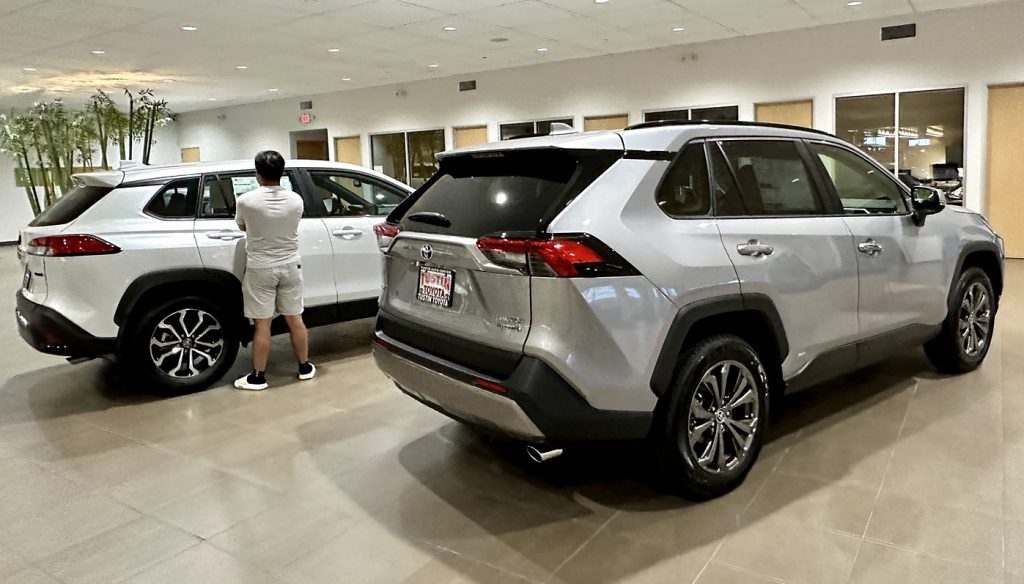New car incentives are continuing to expand, bringing good news for consumers.
Car incentives, which have been rising for two years after bottoming out in the third quarter of 2022, surged to 7.7% of the average transaction price in October, up 6% from the previous month and more than 60% from a year earlier, according to Kelley Blue Book.
The trend is mostly driven by the market uncertainty for next year following the presidential election and dealers racing to clear out inventories and expand incentives to meet annual sales targets as the end of the year approaches.
Charley Jeong, Fleet Manager at Puente Hills Hyundai, said, “The election result is encouraging automakers to sell to clear inventory before the presidential inauguration, and consumers are flocking to leasing because they fear the electric vehicle tax credit will be eliminated. Sales of gasoline cars are sluggish. This month and next month are model-year turnover months, and it’s a good time to buy a new car at cheaper prices.”

The average incentive for the eight major automakers was more than 10% of the sticker price, with Chrysler, Dodge, Jeep, and Ram offering incentives above the industry average. Toyota, Porsche, Cadillac, and Land Rover, on the other hand, offered the fewest.
Among vehicle types, compact SUVs, with 25 models competing for sales, had the highest level of incentives, representing 9.4% of the average sticker price. This was followed by pickup trucks at 8.7% and midsize SUVs, with 30 models competing, at 8.0%.
For electric cars, incentives accounted for 13.7% of the average transaction price, an 18.1% increase from the previous month. This is a 144.6% surge from 5.6% a year earlier, driving strong EV leasing and sales.
Popular models among Korean Americans did not offer as many incentives. “New car sales have been slowing down since September, but Hyundai Elantra and Sonata and Toyota Camry and RAV4 are still selling well,” said Jay Chang, vice president of Eden Motor Group in Koreatown. “Inventory is still tight, with popular vehicles like the Lexus NX and Toyota Sienna and Prius still hard to find or requiring a 1 to 2-week wait. We expect new car sales to pick up again in December.”
The average transaction price for a new car in October was $48,623, up 0.41% from $48,423 in September, with the Mitsubishi Mirage being the only car to sell for less than $20,000.
EVs averaged $56,902, down from $57,580 the previous month but up 0.9% year-over-year.
When looking at the brands with the largest year-over-year drops in new vehicle transaction prices, EV brand Polestar topped the list with a 20% plunge, followed by Mercedes-Benz with a 10.2% drop. Tesla, on the other hand, was the biggest gainer with a 10.6% surge.
Korean automaker, Kia was up 8.7% from last year, while Hyundai and Genesis are only up 1.9% and 0.7%, respectively.
Acura and Infiniti ranked first and second among Japanese brands with 8.1% and 7.7% increases, respectively, followed by Honda at 3.6%, Lexus at 2.7%, Toyota at 2.5%, and Mazda at 1%.
By segment, average transaction prices jumped the most for luxury sedans at 27.9%, followed by luxury full-size SUVs at 13.0%. Full-size sedans fell 7.9%, while sub-compacts and full-size SUVs each saw a decline of 4.7% and 3.2%.
Kelley Blue Book predicted that incentives will continue through the end of the year, which will make the end-of-year auto market even more competitive.
BY NAKI PARK, HOONSIK WOO [woo.hoonsik@koreadaily.com]




